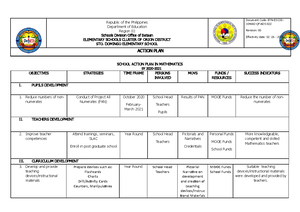- Information
- AI Chat
Was this document helpful?
Government POLI-WPS Office
Course: Education
999+ Documents
Students shared 9735 documents in this course
University: Bohol Island State University
Was this document helpful?

GOVERNMENT POLICIES ON SCIENCE AND TECHNOLOGY
The Philippine government introduced and implemented programs, projects and policies to boost
science and technology.
The goal is to prepare the whole country and its people to meet the demands of a technologically driven
world and capacitate the people to live in a world driven by science.
Padilla-Conception (2015) reported that in 2015, in response to the ASEAN 2015 Agenda, the
government, particularly the Department of Science and Technology (DOST), has sought the expertise of
the National Research Council of the Philippines (NCRP) to consult various sector in the society to study
how the Philippines can prepare itself in meeting the ASEAN 2015 Goals.
The NRCP clustered these policies into four:
1. Social Sciences, Humanities, Education, International Policies and Governance.
2. Physics, Engineering, and Industrial Research, Earth and Space Sciences, and Mathematics.
3. Medical, Chemical and Pharmaceutical Sciences.
4. Biological Sciences, Agriculture, and Forestry.
1. Social Sciences, Humanities, Education, International Policies and Governance
Integrating ASEAN awareness in basic education without adding to the curriculum.
Emphasizing teaching in the mother tongue.
Developing school infrastructure and providing ICT broadband.
Local food security.
2. Physics, Engineering and Industrial Research, Earth and Space Sciences, and Mathematics
Emphasizing degrees, licenses and employment opportunities.
Outright grants for peer monitoring.
Review of RA 9184.
Harnessing science and technology as an independent mover of development.
3. Medical, Chemical and Pharmaceutical Sciences
Ensuring compliance of drug manufacturing firms with ASEAN-harmonized standards by full
implementation of FDA.



![[Reviewer] (Prof Ed) Child AND Adolescent Development](https://d20ohkaloyme4g.cloudfront.net/img/document_thumbnails/ec6b4ec2ba3485b9c55c955aa2537c1c/thumb_300_232.png)



